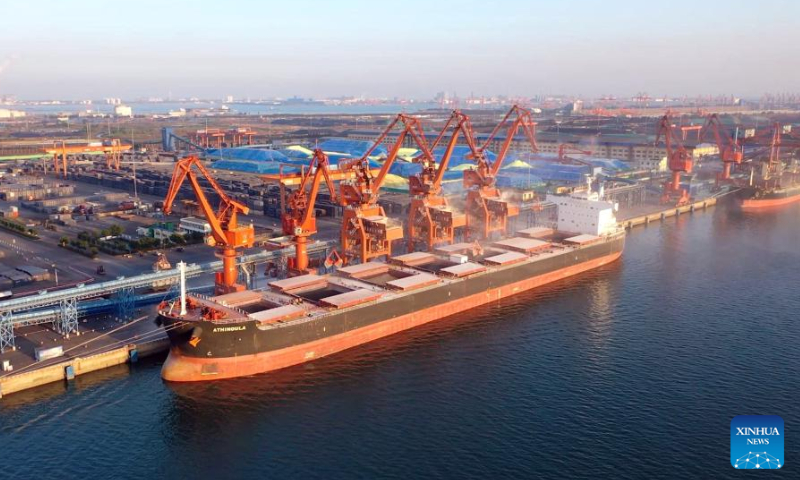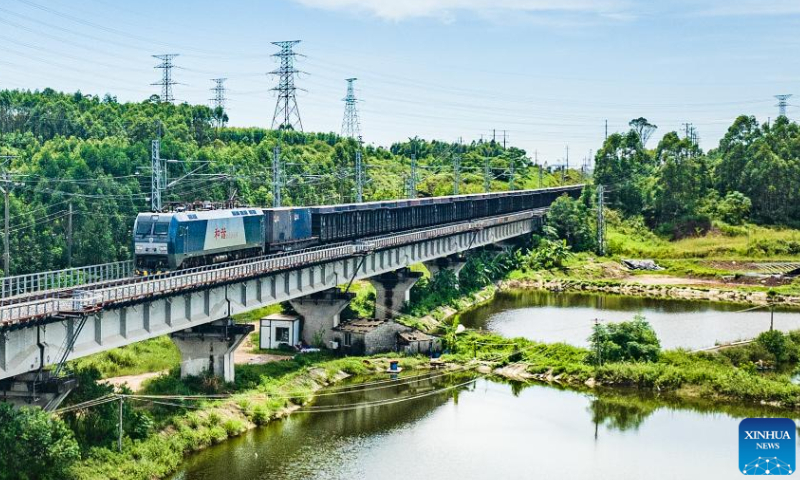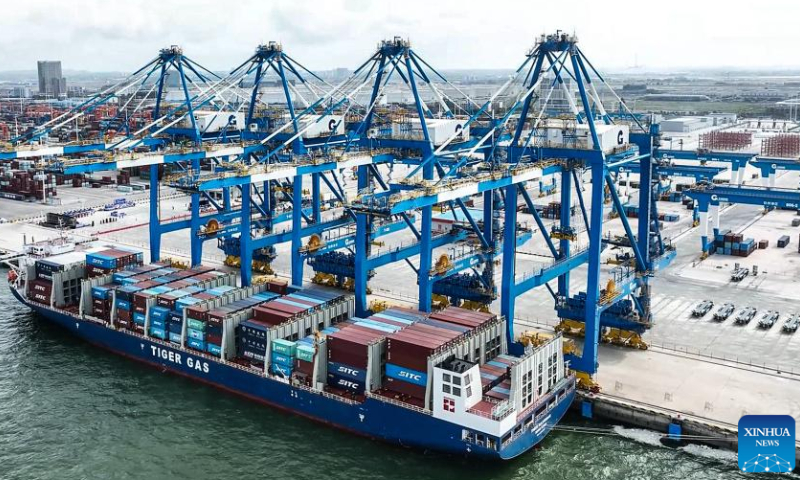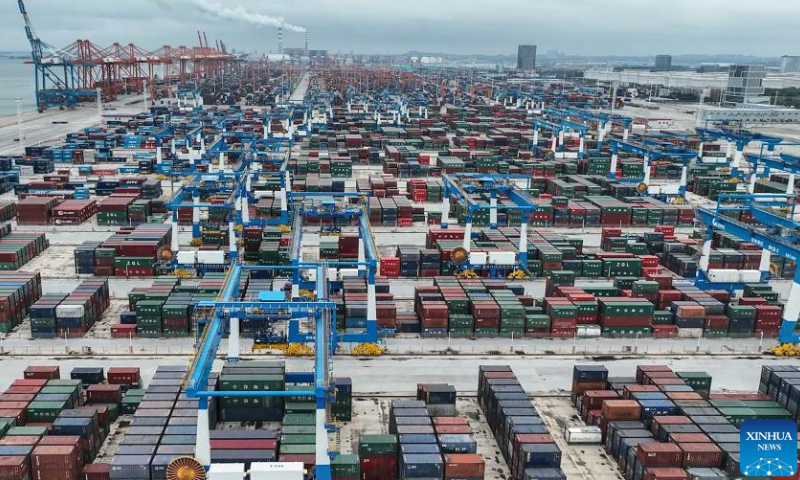
This aerial photo taken on Sept. 16, 2023 shows a vessel docking at the bulk cargo terminal for unloading in Fangchenggang, south China's Guangxi Zhuang Autonomous Region. Container throughput of the New International Land-Sea Trade Corridor witnessed growth in the first three quarters of 2023, according to railway authorities in south China's Guangxi Zhuang Autonomous Region. During this period, some 633,000 twenty-foot equivalent unit (TEU) containers of goods were transported by rail-sea intermodal trains through the corridor, up 14 percent year on year, data from the China Railway Nanning Group Co., Ltd. showed. Launched in 2017, the New International Land-Sea Trade Corridor is a trade and logistics passage jointly built by provincial-level regions in western China and ASEAN members. The trade corridor has developed rapidly over the years, covering 61 cities in 18 provincial-level regions in China and expanding its reach to 393 ports in 119 countries and regions. (photo:Xinhua)
Container throughput of the New International Land-Sea Trade Corridor witnessed growth in the first three quarters of 2023, according to railway authorities in south China's Guangxi Zhuang Autonomous Region.
During this period, some 633,000 twenty-foot equivalent unit (TEU) containers of goods were transported by rail-sea intermodal trains through the corridor, up 14 percent year on year, data from the China Railway Nanning Group Co., Ltd. showed.
Launched in 2017, the New International Land-Sea Trade Corridor is a trade and logistics passage jointly built by provincial-level regions in western China and ASEAN members.
The trade corridor has developed rapidly over the years, covering 61 cities in 18 provincial-level regions in China and expanding its reach to 393 ports in 119 countries and regions.

This aerial photo taken on Oct. 2, 2023 shows a train loaded with goods departing from Qinzhou Port East Railway Station in Qinzhou, south China's Guangxi Zhuang Autonomous Region. Container throughput of the New International Land-Sea Trade Corridor witnessed growth in the first three quarters of 2023, according to railway authorities in south China's Guangxi Zhuang Autonomous Region. During this period, some 633,000 twenty-foot equivalent unit (TEU) containers of goods were transported by rail-sea intermodal trains through the corridor, up 14 percent year on year, data from the China Railway Nanning Group Co., Ltd. showed. Launched in 2017, the New International Land-Sea Trade Corridor is a trade and logistics passage jointly built by provincial-level regions in western China and ASEAN members. The trade corridor has developed rapidly over the years, covering 61 cities in 18 provincial-level regions in China and expanding its reach to 393 ports in 119 countries and regions.(photo:Xinhua)

This aerial photo taken on Oct. 2, 2023 shows a container ship docking at an automation wharf of Qinzhou Port for unloading in Qinzhou, south China's Guangxi Zhuang Autonomous Region. Container throughput of the New International Land-Sea Trade Corridor witnessed growth in the first three quarters of 2023, according to railway authorities in south China's Guangxi Zhuang Autonomous Region. During this period, some 633,000 twenty-foot equivalent unit (TEU) containers of goods were transported by rail-sea intermodal trains through the corridor, up 14 percent year on year, data from the China Railway Nanning Group Co., Ltd. showed. Launched in 2017, the New International Land-Sea Trade Corridor is a trade and logistics passage jointly built by provincial-level regions in western China and ASEAN members. The trade corridor has developed rapidly over the years, covering 61 cities in 18 provincial-level regions in China and expanding its reach to 393 ports in 119 countries and regions.(photo:Xinhua)

This aerial photo taken on Oct. 2, 2023 shows a container storage area at Qinzhou Port in Qinzhou, south China's Guangxi Zhuang Autonomous Region. Container throughput of the New International Land-Sea Trade Corridor witnessed growth in the first three quarters of 2023, according to railway authorities in south China's Guangxi Zhuang Autonomous Region. During this period, some 633,000 twenty-foot equivalent unit (TEU) containers of goods were transported by rail-sea intermodal trains through the corridor, up 14 percent year on year, data from the China Railway Nanning Group Co., Ltd. showed. Launched in 2017, the New International Land-Sea Trade Corridor is a trade and logistics passage jointly built by provincial-level regions in western China and ASEAN members. The trade corridor has developed rapidly over the years, covering 61 cities in 18 provincial-level regions in China and expanding its reach to 393 ports in 119 countries and regions.(photo:Xinhua)
